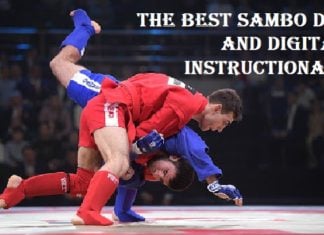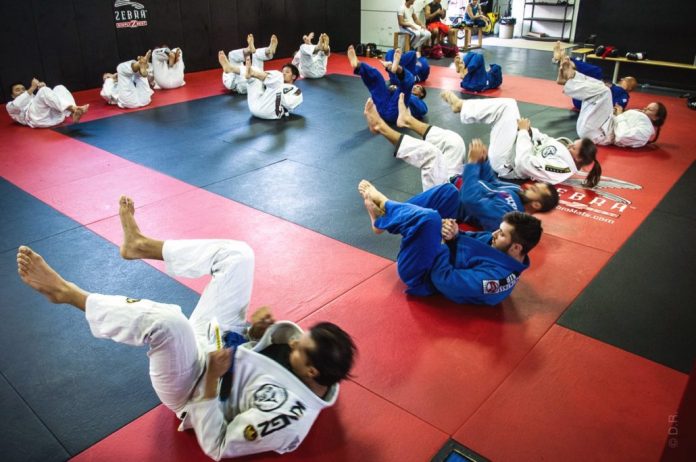
We can’t wait to get back on the mats! The truth is, while we still have some time before we can do what we love, the end is now in sight. As the Covid-19 situations slowly unravel (in our favor, more or less), the world is slowly thinking about returning to normal. And that, of course, includes going back to BJJ. However, after a couple of months (or more in some cases) out, things are not going to be the same. And, while we all like to think we stayed in shape during the lockdown, nobody really managed to stay in BJJ shape. Well, it is about time we do what we can to make sure our return to the mats goes smooth and injury-free. And the most important thing you can do is some specific core work for BJJ.
You’ve heard it times and times again, that the core is a very important group of muscles for Jiu-Jitsu athletes. But what exactly is the core? First of all, it is much more than just your abs, given that it seems most people somehow think these two are one and the same. In essence, the abdominal muscles are a part of the group of core muscles, but they do not represent all of them. A bunch of other muscles, from the small of your back, to intercostal muscles between your ribs and long muscles running the length of your spine, also fall into this category. And they have many crucial roles, ranging from flexion and extension to stabilization and torsion. With dedicated and specific core work for BJJ, you can make sure you get all of these muscles in working shape before you return to the JIu-JItus mats.
Why The Core?
A common question is how come the core muscles are the ones that are so important for BJJ? Isn’t it much more useful to have powerful legs, mobile shoulders, and Popeye-like forearms? As usual, everything has its place in JIu-Jesus, but if you can choose what you need to train first, you should actually always start with the core. While strong hips and hamstrings and iron-clad forearms do come in handy, there are plenty of examples of people who don’t’ have them, and yet, they do impressively great in Jiu-Jitsu. How come?
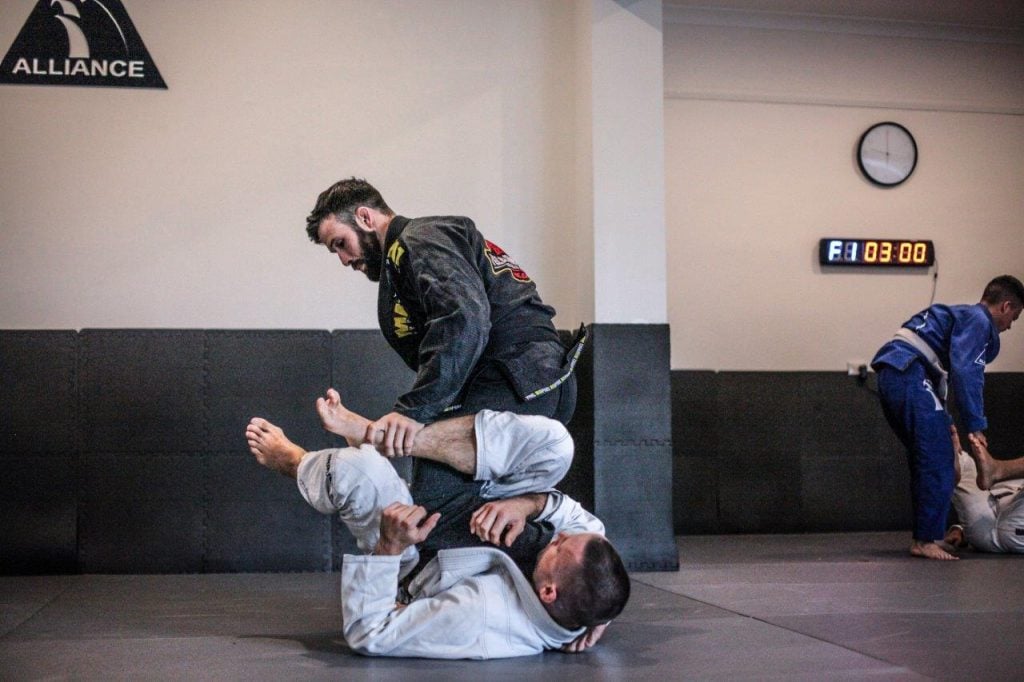
When it comes to controlling our own bodies, there’s one sport out there that is pretty reminiscent of the requirements of BJJ – gymnastics. And, if you talk to gymnasts, and people who understand the biomechanics of the body, you’ll constantly get one piece of advice over and over again – develop a core of steel. And, if it can help gymnasts do all sorts of crazy things with their bodies, from flipping several times through the air, to all the stuff they can perform on gymnastic rings, that it will certainly help with grappling too. You just need some core work for BJJ to fine-tune everything.
Basically, the core muscles are responsible for generating most of the movement in our bodies, particularly when it comes to full-body motions. In fact, they connect the upper and lower parts of our bodies. Also, the core muscles are in charge of controlling posture, and through it, our balance and base. And without that holy trinity of posture, base and balance, there’s not much you can do in JIu-JItsu, is there?
Core Work For BJJ: The Essentials
Core work for BJJ should not be something fancy. If you’re thinking you’re going to stand on a stability ball that’s dressed in your Gi jacket like a flamingo and try to do some crazy crunches, you’re in for a rude awakening, that’s a great way to get injured, nothing more. Working your core will require some common sense and some knowledge of anatomy and physiology. Or you could just follow our advice, and use the following four staple exercises to really hit your core from all possible angles.
Garhammer Raise
This is a regular Bruce Lee type of exercise, just without all the trouble dragon flags may cause to your spine. The Garhammer raise is something very few people incorporate in their core work fro BJJ, and it is a highly beneficial exercise for grapplers.
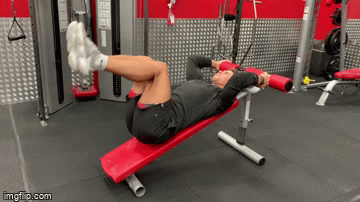
If it is too hard, feel free to start out flat. The more you can do this exercise slowly, and focus on using the abs rather than just the hip flexors, the better it will be.
Hanging L-Sit Holds
Nothing fancy here. You just need a pullup bar or a safe spot to hang from. The goal is to do an isometric hold. Usually, L-sits are done with your arms on the floor, or on parallel bars. In this case, hanging from a pullup bar will make it more challenging, and much more useful for grappling, given that you’ll often need to use your core to stabilize while pulling, like for example in any pressure passing scenario.
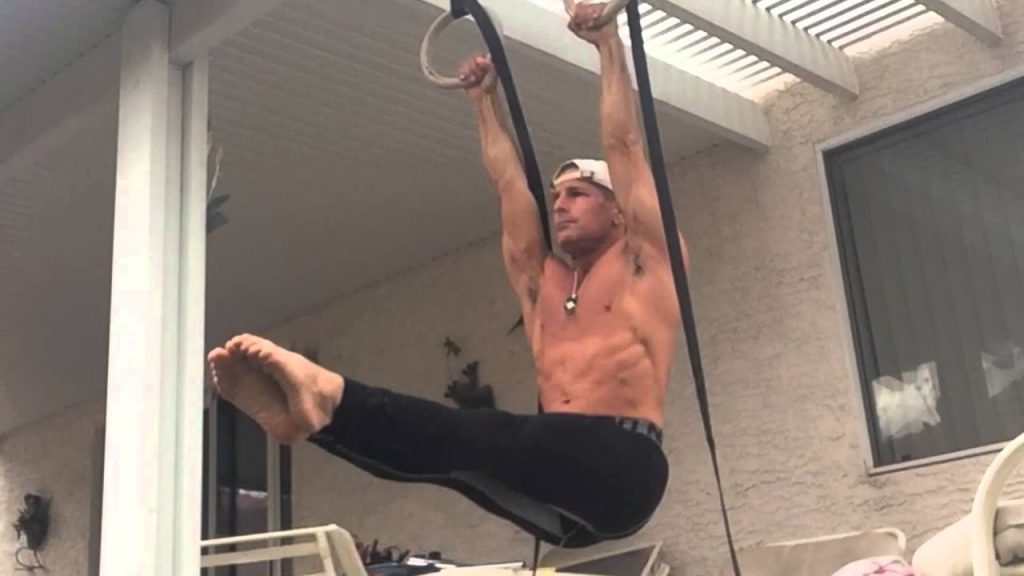
Since isometric exercises only strengthen the muscles in for a very short range of motion you can always add angles to your L-sits incorporated in core work for BJJ. For example, you can hold at 90 degrees, then lower the legs a little and hold there, lower a little and hold, etc, until you get all the way down. Raising your legs higher will require some solid core strength to behind with, so leave that version for later.
Ab Wheel Rollouts
One more exercise that people get very wrong. The ab wheel is a simple tool but it can offer amazing returns, but you need to know how to execute it properly. It does have a few tips and tricks rather than just driving the wheel forward and back.
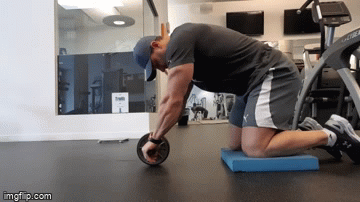
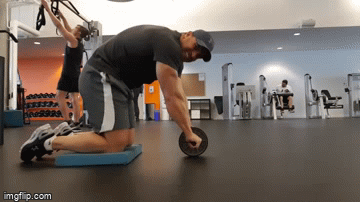
Putting It All Together
First of all, do not be tempted to organize core work for BJJ in a circuit. While this may be tempting, particularly in terms of finishing quicker, it will yield subpar results at best. Think of core work for BJJ as a workout on its own. While you can do it at the end of a workout, or even after rolling, it is not just an ab circuit.
In terms of sets, 3-6 is great. Start with three, of course, and build from there. Also, remember that each of these exercises has progressions, so there’s a lot of tinkering you can do.
For the Garhammer raise, I recommend trying it out with sets of 8-12 repetitions, and a rest period of 30-60 seconds in between sets. Once you’re comfortable with the motion, you can transition into rest-pause sets, which will definitely challenge you. That means doing two sets of 8-12 and then doing a final set where you do as many good reps as you can, rest for 15 seconds, repeat, rest for 15 seconds, and repeat once more.
The L-sit holds are easy to program. At first, you’ll work to accumulate time, until you can hang for a minute/ That’s when you start introducing sets but start at 30 seconds again. When you can do 5 sets of 30-second hangs, start playing with angles.
Finally, use ab wheels smartly. Incorporate the simplest version in your core work for BJJ, to begin with. That means start with kneeling ab wheel rollouts from the spine. Then add rollouts from the shoulders, preferably supersetting them with the spine rollouts. Anything in the 8-12 range is perfect, with the same number of sets (3-6). Going to standing rollouts or side to side will require experience and core strength, as you’ll soon find out.

















